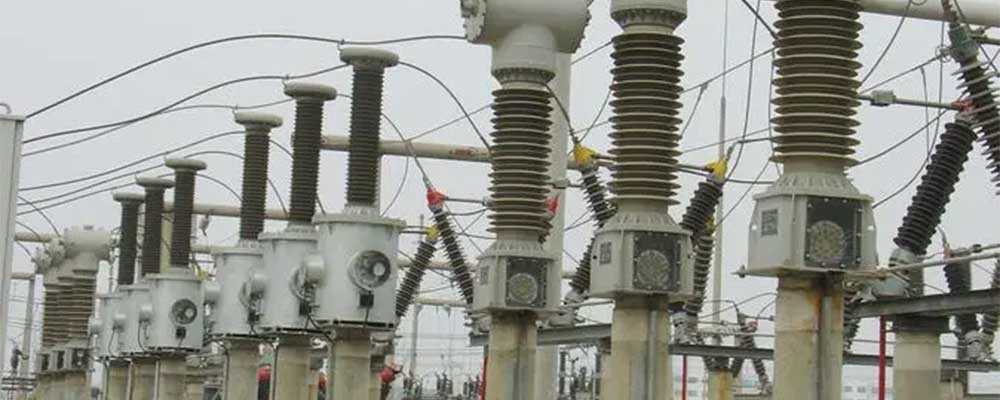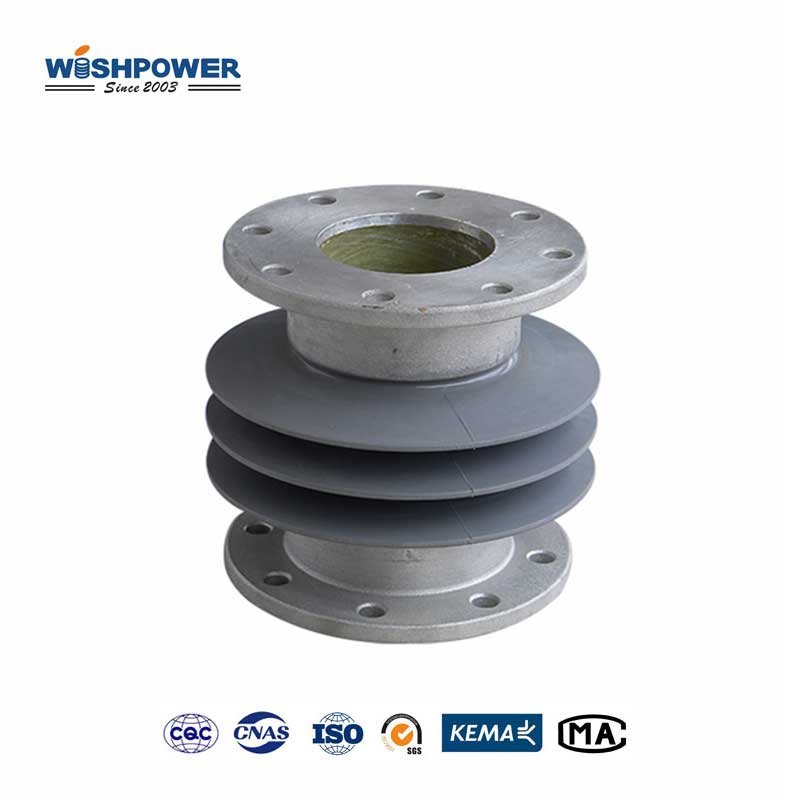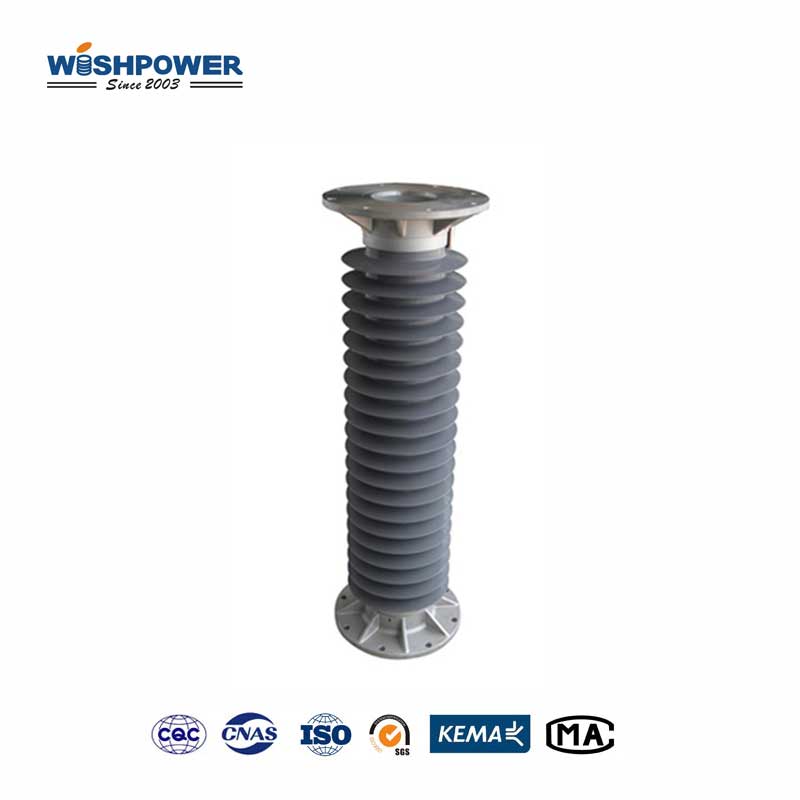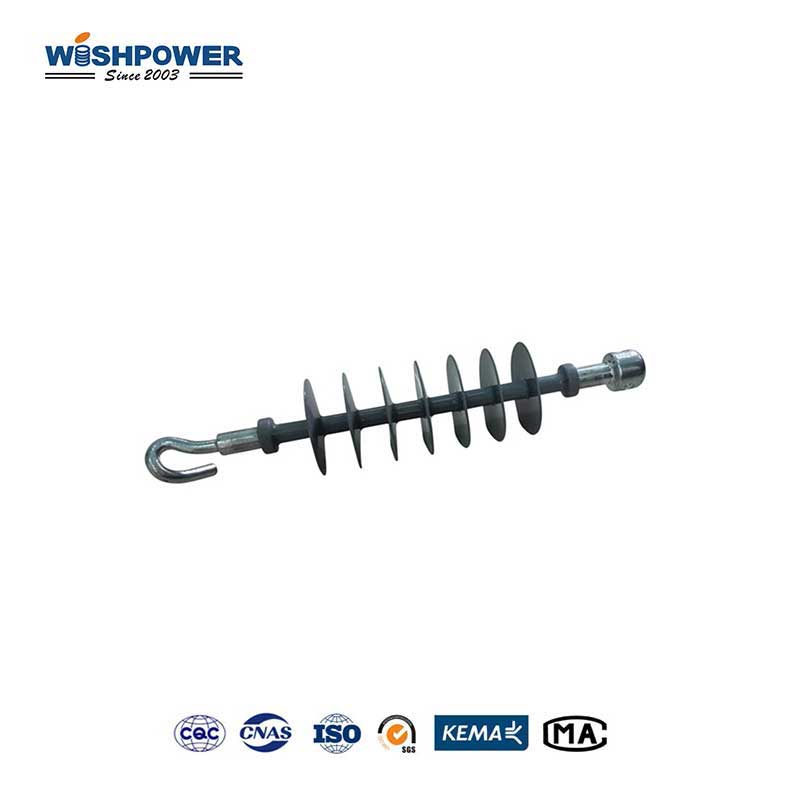In modern electrical systems, high voltage and ultra-high voltage applications, composite hollow insulators have developed into an essential part. With their advanced capabilities in insulation and mechanical resistance, they supply essential support and protection to power grids and substations.

What is composite hollow core insulator?
Hollow insulators comprise a hollow fiber-reinforced core tube made of epoxy or fiberglass-reinforced plastic to furnish the strength of the core tube. The outer surface is made of a layer of silicone rubber or other weather-resistant polymers that contain this inner tube and the inner insulating layer. Combined, these materials make light and strong insulators that are highly durable against environmental stresses, like UV rays, rain, and pollution.
The hollow design offers a key advantage: because it is more compact and versatile, it allows the placement of components (circuit breakers, current transformers, etc.) within the insulator core. In addition to the functionality enhancement of the insulator, this design also provides a clean, space-saving configuration for substations.
Unique Advantages of Composite Hollow Insulators
- Easy to Install and Lightweight
Composite hollow insulators are much lighter than traditional insulators, providing a dramatic load reduction on transmission towers and substations. In addition, their light weight allows them to be easier to transport and install, which reduces labor costs and makes installation at remote or hard-to-reach locations simpler.
- Safety and Reliability enhancement
The hollow incorporates an ideal structure for holding high-voltage components away from external contaminants and temperature changes. This setup reduces the risk of electric failures and increases system reliability, especially in substations where continuous, high-reliability operation is needed.
- Low Maintenance Requirements
The hydrophobic silicone rubber shell repels water, preventing contamination accumulation and reducing the frequency required that the unit be cleaned. Highly polluted environments present a critical application for this scenario as insulators could easily need to be maintained regularly to prevent leakage, flashover, and similar occurrences.
- High Resistance to Environmental Degradation
Composite hollow insulators are used for applications such as UV radiation, salt spray, acid rain, and other contaminants that may damage traditional materials. Because of their resistance to environmental factors, they are especially well suited to coastal and industrial areas where traditional insulators might encounter problems.
- Excellent thermal stability
Composite hollow insulators are capable of significant temperature change without excessive expansion or contraction, thanks to fiber-reinforced core and silicone rubber shell. It provides this stability for reliable operation under extreme conditions, hot or cold.
Common application scenarios of composite hollow insulators
- High-voltage circuit breakers
Composite hollow insulators are used frequently as housings and insulating supports for high-voltage circuit breakers in substations. It protects the internal electrical component and serves as a structural support to handle operating and environmental forces.
- This is Gas-insulated switchgear (GIS)
Because GIS systems must be compact, composite hollow insulators are critical. They insulate live parts in gas-insulated equipment safely and efficiently within confined spaces.
- Power transformers
Current and voltage transformers are located in composite hollow insulators in high-voltage installations for insulation and environmental protection. This arrangement is safe for use in measuring and monitoring the electrical characteristics of substations.
- Surge protectors
Housings for surge protectors can be made from composite hollow insulators which will protect electrical systems against voltage spikes. They are wearable and durable and can be used in outdoor installations subject to lightning strikes and transient surges.
- Transformer Bushings
Common in power transformers is the use of composite hollow core insulators as bushings to provide insulation for conductors moving in and out of the transformer housing. This application is highly sensitive to insulation integrity to assure the transformer reliability and prevent failures.
Conclusion
Hollow core composite insulators constitute a great advance on existing insulation technology for high voltage applications. Gaining in weight, safety, and reliability from their hollow design and weather-resistant materials. These insulators are indispensable in modern power infrastructure, especially regarding high-performance insulation and mechanical resilience, from high-voltage circuit breakers to gas-insulated switchgear.
If you have different opinions or want to know more, please leave a message on the website or contact us directly at info@wishpower.net

















